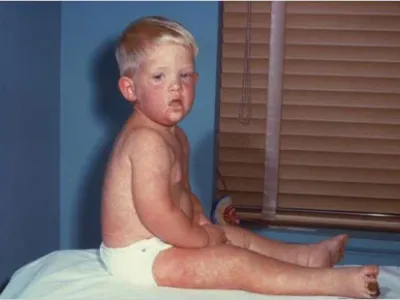WHO unveils first global framework for responsible life science use
The World Health Organization (WHO) today announced the release of the first global framework on the responsible use of life sciences, which addresses the accidental or deliberate misuse of biologic and other life sciences, including dual-use research.
In a statement, the WHO said the goal of the guidance is to help countries manage oversight while speeding innovation and mitigating any potential negative impacts. Soumya Swaminathan, MD, the WHO's chief scientist, said life sciences and technology have the capacity to improve health, societies, and the environment. "However, developments and advances in life sciences and associated technologies could pose risks caused by accidents during experiments, inadvertent and deliberate misuse."
The guidance spans 186 pages and covers topics such as misinformation and disinformation, managing large health datasets, increasing capacity for biorisk management, and navigating challenges involving infectious disease research.
According to the report, the guidance builds on earlier work by the WHO's science division, such as its dialogues with the research community, with much of the work spearheaded by three working groups formed at the first meeting in March 2021. The groups also met last September, before posting a draft framework in February that was open to public feedback and comments. The draft was peer reviewed by an external group.
Sep 13 WHO statement
WHO global guidance
US pet shelters in 'crisis mode' after COVID-related drop in spay/neuters
Pet shelters across the United States are overcrowded, largely due to a falloff in spay/neuter surgeries and veterinarian shortages during the COVID-19 pandemic, reversing a downward trend in euthanasia seen since 1973, finds a study today in Frontiers in Veterinary Science.
University of Florida (UF) at Gainesville researchers used practice-management software to study data from 212 spay/neuter veterinary clinics from January 2019 to December 2021.
The researchers noted that a rise in subsidized spay/neuter programs helped decrease shelter euthanasias from roughly 13.5 million in 1973 to 1.5 million in 2019, but the arrival of SARS-CoV-2 in March 2020 and related fears of infection triggered the suspension of nonessential services.
In 2019, clinics performed 1,217,240 spay/neuters, but that figure fell 22% in March 2020, reaching -80% in April. Surgeries began to rise in May (-39%) but plateaued in July (-6%) and remained slightly below the 2019 level through December 2021.
In 2020, total spay/neuters dropped 13%, to 1,059,388. Relative to 2019, 2020 spay/neuters declined 17% in the Midwest, 15% in the Northeast and West, and 11% in the South. The procedures fell 19% in dogs and 10% in cats.
A total of 190,818 fewer-than-expected spay/neuters were performed from January 2020 to December 2021. "If a similar pattern was experienced by other spay/neuter providers in the US, it would suggest there is a deficit of more than 2.7 million spay-neuter surgeries that animal welfare organizations have yet to address," the researchers wrote.
In a UF press release, lead author Simone Guerios, DVM, PhD, said the situation is critical. "Currently, shelters are in crisis mode, with overcrowding and lagging adoptions," she said. "Pet overpopulation seems to be increasing, leading to increased shelter euthanasia for the first time in many years."
Sep 13 Front Vet Sci study
Sep 13 UF press release
Study links reduced broad-spectrum antibiotics to fewer candidemia cases
Reduction of broad-spectrum antibiotic use at a Japanese tertiary hospital was associated with decreased incidence of hospital-acquired candidemia, researchers reported last week in Scientific Reports.
Although antibiotic pressure is considered a risk factor for hospital-acquired Candida infections, its relationship with candidemia incidence is not well established. To evaluate whether efforts by the antimicrobial susceptibility team at Japan's Itabashi Chuo Medical Center to reduce use of broad-spectrum antibiotics had an impact on hospital-acquired bloodstream infections caused by Candida spp, researchers reviewed data on patients treated with three broad-spectrum antipseudomonal agents: carbapenems, tazobactam/piperacillin, and cefepime.
They compared monthly antibiotic consumption and candidemia incidence prior to implementation of stewardship activities (pre-intervention, April 2017 to March 2018) and after (intervention, April 2018 to September 2020).
The median monthly days of therapy (DOT) per 1,000 patient-days for the 3 antipseudomonal antibiotics combined was 69.4 in the pre-intervention period and 56.3 in intervention period, with carbapenem DOT falling from 28.4 to 10.0. Downward trends in monthly DOT continued after the intervention. The median hospital-acquired candidemia incidence was 0.17 and 0.08 per 1,000 patient-days during pre-intervention and intervention periods, respectively. Time-series analysis showed a significant change in the levels of candidemia after the intervention (−0.16 per 1,000 patient-days). The trend in the incidence of hospital-acquired candidemia did not significantly change between pre-intervention and intervention.
"The decrease in broad-spectrum antibiotic use (especially carbapenems) achieved a sustained clinical impact by reducing the incidence of hospital-acquired candidemia," the study authors wrote.
Sep 7 Sci Rep study















